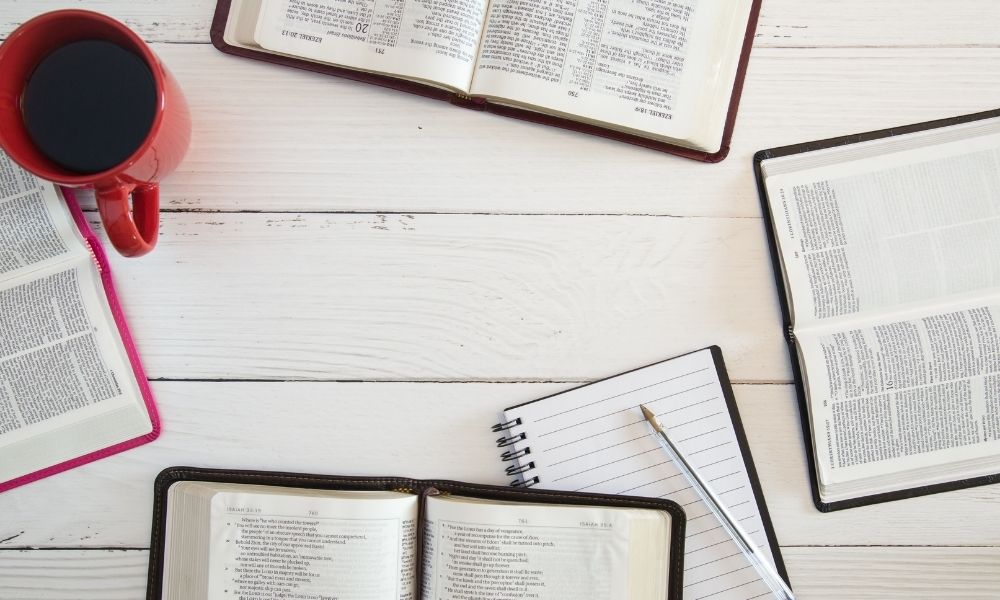Using the SOAP Bible Study Method

There are three things you can do with a beautiful leather-bound edition of the King James Bible. You can simply let its mere existence lend a note of gravitas to your coffee table or bookshelf and admire it as just another part of your family room’s lovely décor. You can read your Bible, referring to it here and there, maybe brushing up on a chapter or two a day. The third and most demanding thing you can do is study it, not just reading the words on the page, but examining them, interrogating them, and finding a way to apply them to your daily life.
There are numerous ways to constructively approach Bible study. In this post, we’ll examine a popular approach that uses the acronym ‘SOAP,’ which stands for scripture, observation, application, and prayer. All you need is your King James Bible, a journal, and time. By going through these four steps with every reading selection, we hope that readers can truly derive meaning from their readings. Rather than simply turning the pages on a chapter, they will experience personal growth. You can begin working toward that growth with this guide to using the SOAP Bible study method.
Scripture
The first step is an intuitive one—SOAP begins with reading your chosen selection from the Bible. This can be one chapter or a few chapters. Read your passage thoroughly, perhaps even more than once. In your journal, write down a verse or two that particularly resonated with you. This is important because putting pen to paper greatly aids in building memories. Work to interpret the florid prose of the KJV into everyday vernacular so you can share it with others.
Observation
After you’ve finished reading and writing, it’s time to look inward. Your observation time should consist of thinking about what you’ve just read and asking questions about the reading. Start with the who, what, where, when, and why of classic identification exercises. This will help you gain a deeper understanding of the people, their motivations, their surroundings, and even the historical context. Ask further questions, such as, “What stood out to me?” or “What message were the writers trying to send?” Continue to write these questions and answers longhand in your journal. Again, this helps you commit your observations to memory and allows you to refer to them later.
Application
After you’ve observed your reading selection, you’ll advance to the application phase of the SOAP study. This is when you ask what it all means: what did the Holy Spirit intend for me to gain through reading this? What does this teach me about myself? How can I apply this to my daily life? It’s by applying your Bible study that you truly make the biggest difference between studying the Bible and merely reading it.
Prayer
Every exercise should end with a cool-down, and the mental and spiritual exercises of Bible study are no exception. While it may feel self-evident to include prayer as part of Bible study, making this communication a part of your routine is important to sum up the day’s reading and journaling work. Your prayer should relate back to your reading and should thank the Lord for His wisdom and guidance. By using the SOAP Bible study method to deepen your understanding of Scripture, you can place more purpose behind the observations and prayers you had already made. Of course, this kind of rigorous study requires a copy of the Bible that can handle those rigors—perhaps one from your dedicated KJV Bible store.
